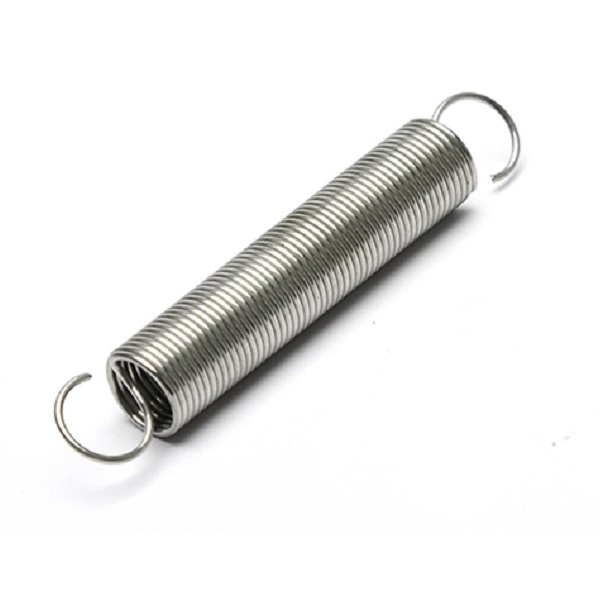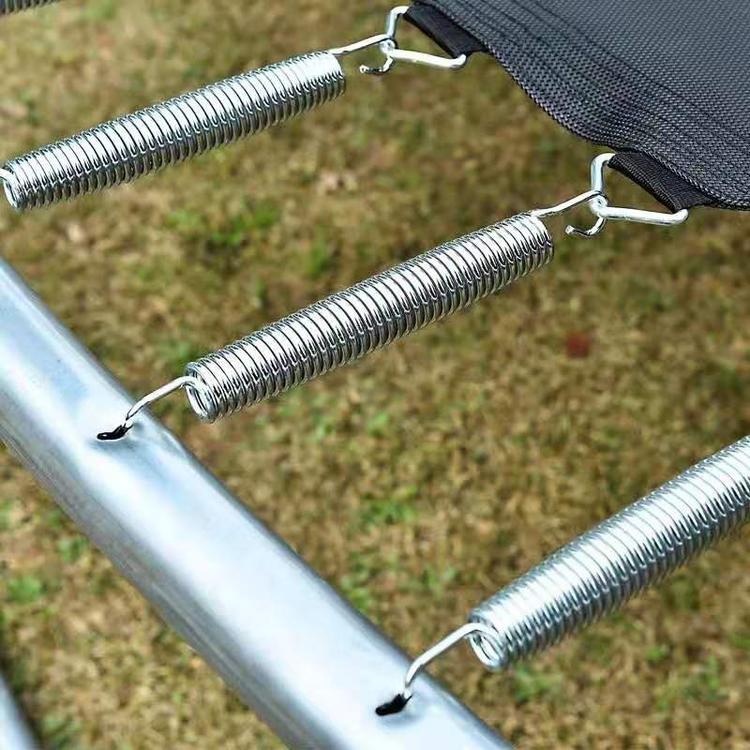 2020-08-25
2020-08-25
Trampolines can be traced back to the Comanche Indians of North America in the mid-19th century, and acrobats in Chinese circuses have been using similar trampolines for at least 200 years. The founder of the modern flexible trampoline is French acrobat Du Trampolin. He used hemp ropes to form a protection net to strengthen the safety of the "swing trapeze in the air" and use the elasticity of the net to throw the actors into the air to complete Kind of action.

A trampoline spring belongs to the technical field of springs, and includes a spring body with two pull hooks at each end, one of which hooks hook the frame, and the other hook hooks a connection ring on the jump fabric, and the hook hooks of the connection ring. The ends of the fins are bent along the circumference in a decreasing diameter. It includes a spring body (1) with pull hooks (2a, 2b) at both ends, a hook (2a) hooking the frame (4), and a hook (2b) hooking the connecting ring (6) on the jumper (5). Its characteristics A bending part (7) is formed at the end (3) of the pull hook (2b) along the circumference with a decreasing diameter.
There is no difference in the length of the trampoline spring on the material, but the shape of the long spring is not obvious compared with the short spring. According to F = k × △ x, the material is the same and k is the same. It can be known that the magnitude of the force is related to the deformation. With the same force, the relative unit deformation of the long spring is small, so the long spring is easy to pull. Under the same force, the short spring deforms greatly, its elasticity decays faster, and safety accidents are more likely to occur. Therefore, the spring used for the trampoline is a long spring, which reduces the safety risk while ensuring the same spring force.

Trampoline exercise is very in line with the psychological characteristics of children's entertainment and sports. Persistence in exercise will make children's leg muscles and cerebellum balance nervous system and cerebral nervous system more developed, and can achieve the purpose of growing taller. The spring of the trampoline can save energy. When a person falls, the spring absorbs the kinetic energy and transforms it into the elastic potential energy of the spring. When the person jumps, the elastic potential energy of the spring is converted into the kinetic energy of the person, which is superimposed on the work done by the legs of the person to make the person jump higher.
Trampoline exercise can enhance the functions of children's physical systems, speed up blood circulation, strengthen metabolism, promote cardiopulmonary function, enhance lung dynamics during trampoline play, and have a good prevention and treatment of common respiratory diseases. Exercise can also promote gastrointestinal peristalsis, enhance digestion and appetite, and also have a certain adjuvant therapeutic effect on not eating.